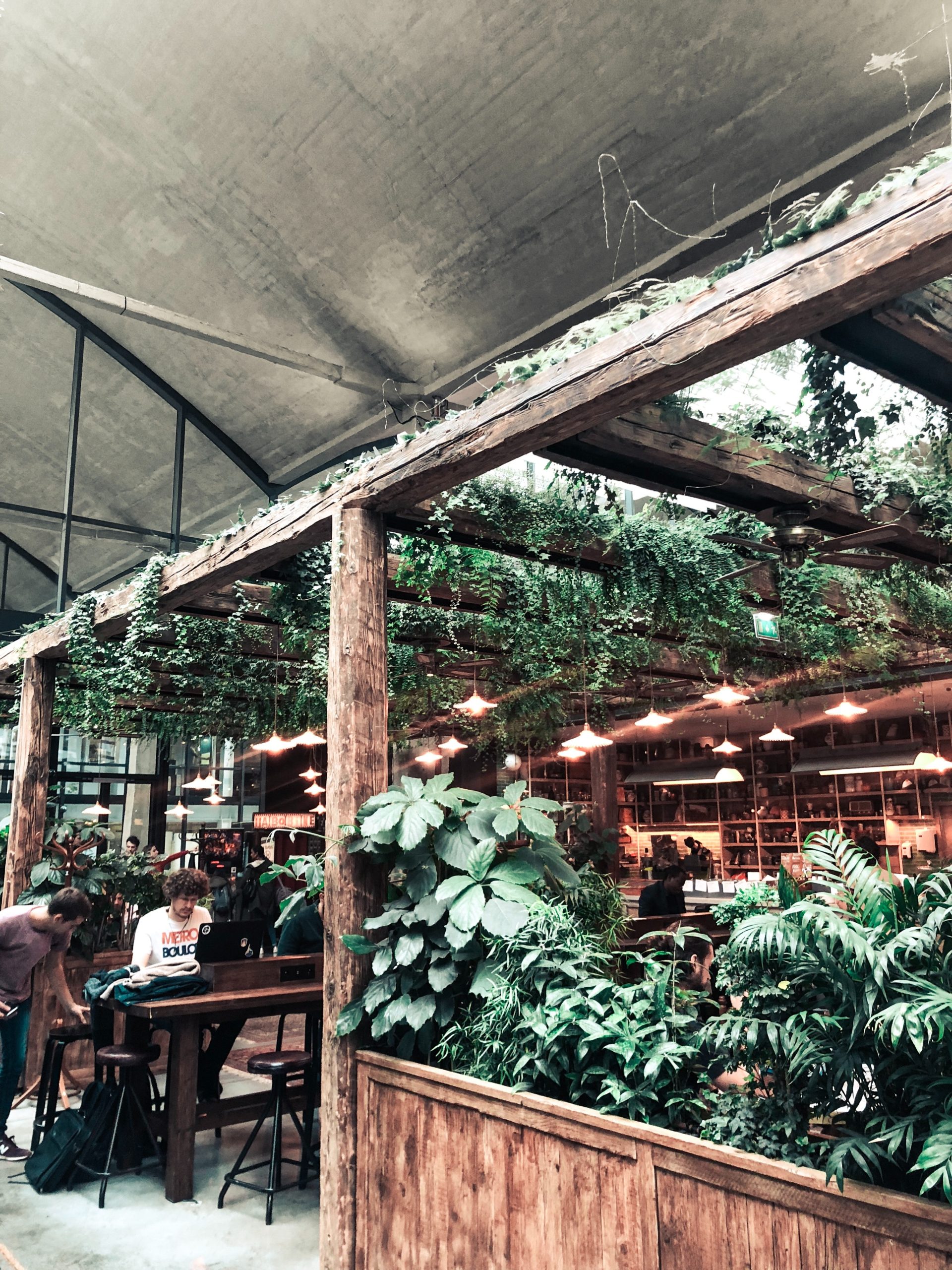
INDOOR LANDSCAPING – In best Home Interior designs and beyond
When an average person spends one-third of his lifespan or 90,000 hours at work, it calls for a stress-free happy working environment. Today, most offices have indoor plants and interior landscaping to beautify the space and create a stimulating professional environment for the employees. Indoor landscaping is becoming an essential extension of a healthy lifestyle. Offices and even modern homes are introducing the green concept into their internal surroundings.
What is indoor landscaping?
Indoor landscaping, also known as interior landscaping, plantscaping or interiorscaping, is all about the art of designing, planning, installing, and caring for plants but inside an enclosed home or office environment. It is used to bring the positive effects of the outdoor nature into a home or office.
Along with the installation of plants, indoor landscaping also includes water features, rocks and other natural elements to create the desired ambience. Handled by professional horticulturists or indoor landscape designers, it is the most cost-effective way to improve the aesthetic look and feel of an interior space. These professionals balance elements like form, color, texture, shape, size, and proportion to create installations that complement a building’s layout. They arrange a mix of living plants in an artistic manner to generate positive feel-good vibes and improve the overall ambience.
Things to keep in mind during interior landscaping While trying to create the best home interior designs or best office interior designs, here are a few elements that need to be taken into account to balance the space. These include:
- Proportion
It is important that you take into account the length, width, height and the overall scale of the area that needs plantscaping. From a large office space to a smaller retail space, ensure you choose plants that blend well with the size of the room. Very small plants or bonsais may look good in a home but not create a green effect in a larger space. - Balance
Often doors and windows require a balance on either side. Placing equal plant material and identical plants on either side of a centreline helps to create the balanced look. Balance the total number of plants in a space to create either a focal effect or repetitive to achieve a pleasing effect. - Color
From flowering plants to leaves of different shades, color has to be coordinated with the background walls and the feel required in the space. After all the landscape must blend-in well with other objects in the room rather than stand out like a sore thumb. Select indoor plants and containers that echo with a color found elsewhere in the room. - Form
Every plant has a three-dimensional shape that fills the space differently. From creepers to potted plants the different forms include columnar, pyramidal, global, vase and more. Consider the overall look you propose as the space will change in appearance when the plant begins to grow. - Texture
From smooth leaves to spiky, from striped leaves to plain, from thick bold leaves to finer leaves, texture can provide contrast and highlight the place. The only thing to remember here is when you are combining and mixing different textures use pots of the same color to play up the different foliage types.
In all of the above, don’t forget to check which plants big or small grow well with limited sunlight and in indoor conditions. If it’s a larger plant place it near a south-facing window for natural light. The best interior designers in San Francisco, are now introducing more real plants in their top home interior designs and office interior designs.
Types of Interior Landscaping
Interior landscaping has grown in importance and become a part of interior design for commercial establishments.
Its aesthetic value along with several benefits makes it the perfect application in offices, building atriums, lobbies, retail spaces, hotels, restaurants, and schools. Today, top interior design companies in Bay Area are challenged to offer green spaces as holistic solutions. They are creating the best home interior designs and best office interior designs in San Francisco and the US working closely with professional interior landscapers.
Here are a few popular types of interior landscaping: –
- Living Walls
In a city like San Francisco work areas are calling for living walls or vertical gardens. These green installations are planted upright for aesthetic, environmental, or space saving purposes. Living walls play and important part in modern landscaping, as it contributes to a building’s LEED (Leadership in Environmental Energy and Design) criteria.
As vertical garden use hydroponics, they are easy to maintain, highly customizable, and the most effective to bring
the green revolution indoors. - Waterscaping
Water features are popular to create both home and best office interiors. In this interior landscaping water features like fountains, waterfalls, streams, fish ponds are incorporated into an area to add feel to it. Water plants are added to provide a more natural ambience. They are ideally designed for large lobbies to provide a soothing effect. - Softscaping
Indoor gardens or interior green gardens or softscaping are regularly seen in most corporate offices. Softscaping focuses on integrating a refreshing look that helps to reduce stress levels of the employees. It can be in the form of a room divider, consistently placed greenery in containers or an exclusive green area created to mimic a small garden. - Hardscaping
Hardscaping or stonescaping originated with Japanese landscapes. Here, the amount of green plants used is less and more of real rocks and pebbles. This is a low-maintenance alternative to green gardens achieved by massing various shape forms of stone interspersed with only a handful of real plants. It helps to create a peaceful vibe and connect with the external environment thus used in meditation zones and Zen gardens. - Indoor Horticulture
This is micro farming in an interior space that has proper sunlight and air circulation. Indoor horticulture garden can be made up with trees, shrubs, flowering plants, vegetables, and herbs. It achieves a greenhouse or courtyard-like ambiance for an energetic and cool fresh ambience like a real garden experience. It can include a mixture of floating gardens, water features, and stonework with an added depth of complexity for grandeur impressions. A bit more high maintenance, it requires the services of a professional horticulturist.
The Benefits of Indoor Landscaping Indoor landscapes provide physical and mental health benefits. Due to its multiple advantages it is used to create grand interiors for hotels, calming effect in hospitals, productive atmosphere in offices and a warm personalized touch at home. Some of these benefits include:-
- Improve the aesthetics of a building
- Reduce stress levels and improve mood
- Increase productivity in the workplace
- Generate happiness quotient
- Help patients to recover faster from illness
- Absorb carbon dioxide and produce oxygen rich air
- Reduce background noise to help concentration
- Save on energy costs as it keeps the air temperature down
- Benefit the overall eco-system
- In retail setting, proven to increase the time shoppers spend in the store by half an hour
As humans, we need to conserve the environment for future generations.
By nurturing greenery, interior designers are contributing in a small way to make the planet a better place.
